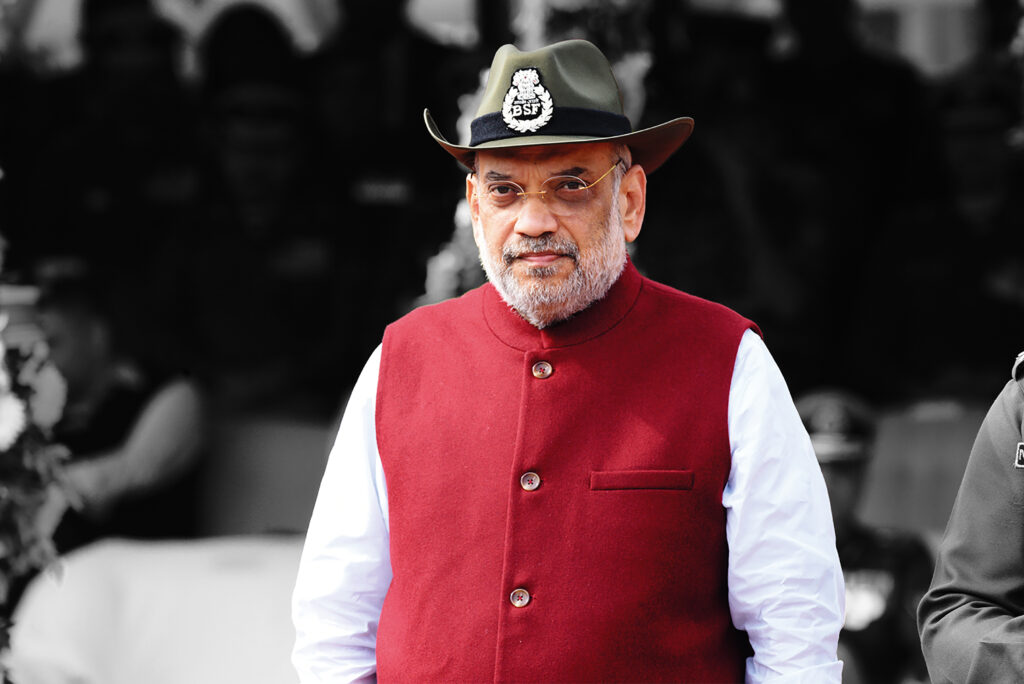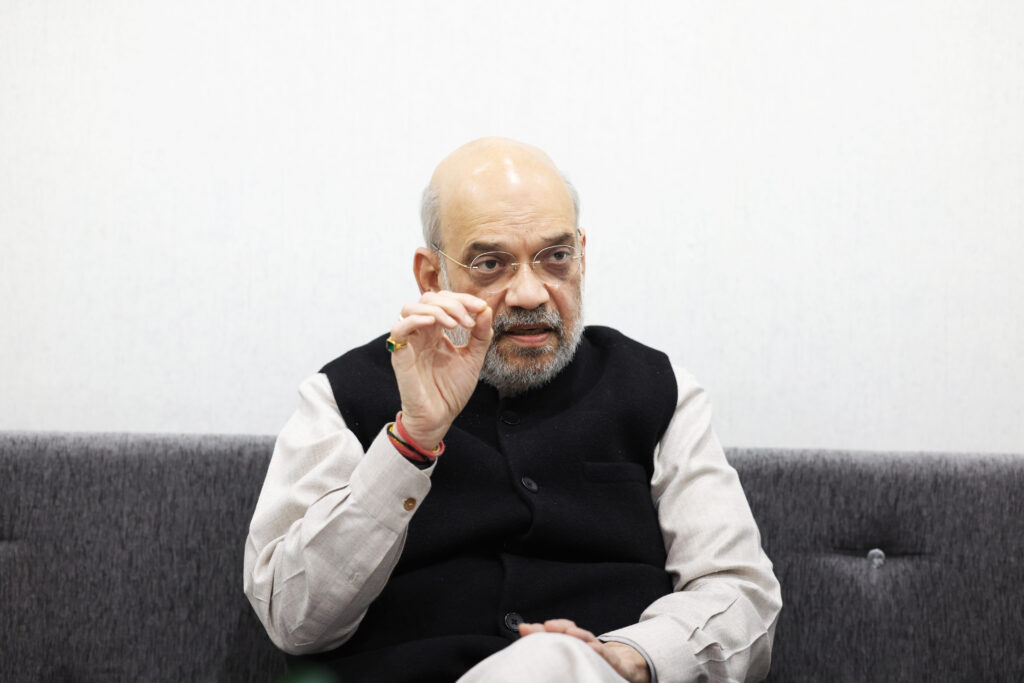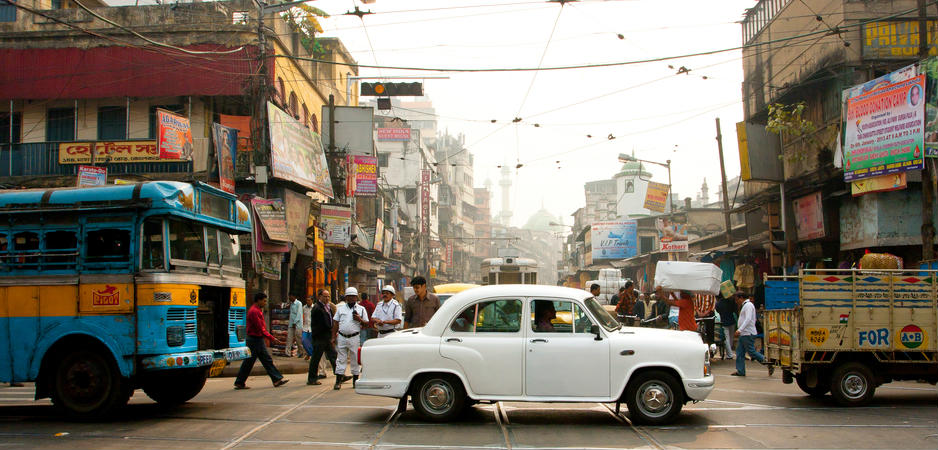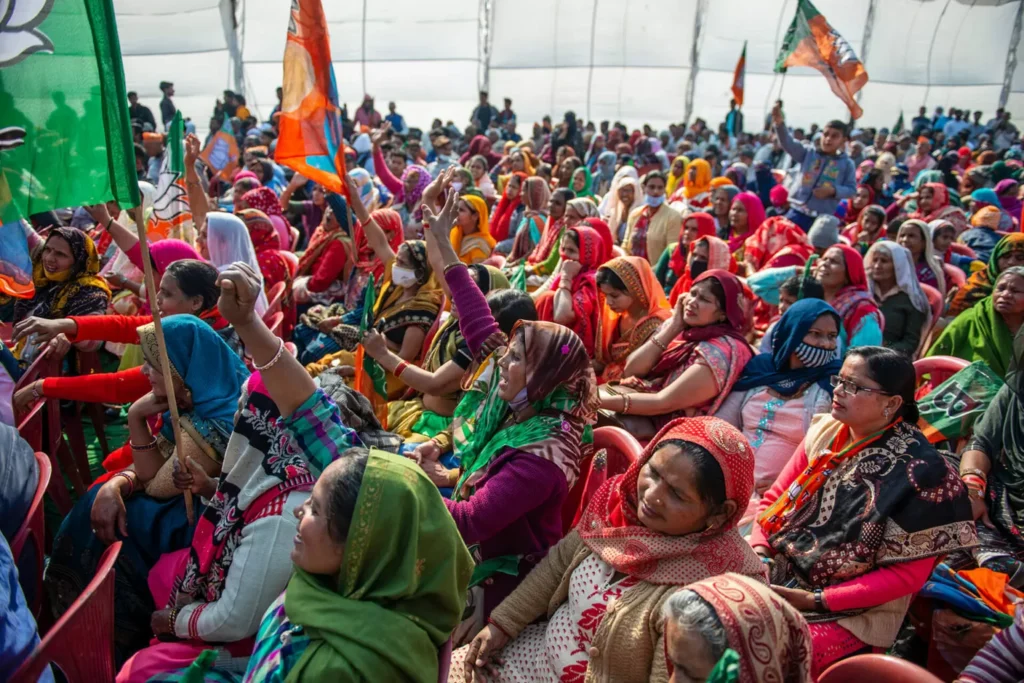In matters pertaining to substantive criminal law, independent India has intriguingly persisted with the Indian Penal Code (IPC), a statute enacted by the British Colonial Government in India in 1860.
The act was amended a few times since independence in 1947. But the amendments were mostly formal: for instance, offenses by or relating to public servants under sections 161–165A were repealed by section 31 of the Prevention of Corruption Act, 1988. Corruption was instead to be punished under sections 7–16 of the Prevention of Corruption Act.
On the rare occasion that substantial amendments were made to the code itself, they were done as a knee-jerk response by the government of the day to public outcry over a heinous crime. This is true of the Nirbhaya case, a 2013 criminal case in which a student was gang raped and murdered. The case resulted in a radical redefinition and punishment of rape under sections 375 and 376 of the IPC. It also created new provisions dealing with rape in aggravated form, such as rape on a women under 12 years of age and gang rape etc, prescribed under new sections 376A–376E.

A new law, Bharatiya Nyaya Sanhita (“Indian Justice Code”), 2023, replaces the Indian Penal Code, 1860, on December 25, 2023. Similarly, Bhartiya Nagrik Suraksha Sanhita (“Indian Civil Protection Code”), 2023, and Bhartiya Sakshya Adhiniyam (“Indian Evidence Act”), 2023, replaced the Code of Criminal Procedure and the Indian Evidence Act, respectively.
The new justice code is to be welcomed if only because it constitutes an exercise in independent India’s complete review of a partly obsolete colonial law, presumably crafted to serve the interests of the colonial power, and supplants it with a new, substantive law that retains what has proven effective post-independence but amends existing provisions. Additionally, it adds fresh ones that consider 76 years of experience in the operation of the repealed law. At one stroke, the Sanhita retains the bulk of the Code but introduces significant new provisions. So the approach to the repealed colonial law is not ideological and radical, but adaptive and reformist.
Sedition penalized
One of the main concerns reflected in the amendments of IPC provisions and the introduction of new ones in the Sanhita is the security of the Indian state. Ever since independence, the experience of the Indian state has been not only one of external enemies aiming to annex its territories, but of the debilitation of the state by instigating constant internal violence. Since the 1990s, the destabilization of India by its enemies witnessed a marked increase as the country dealt with internal turbulence of all kinds. There have been secessionist movements in Jammu and Kashmir, the northeast and Punjab. Pakistan’s Inter-Services Intelligence (ISI) and Army and China’s People’s Liberation Army have promoted terrorism and insurgency. The country has been a victim of cross-border terrorism and Maoist violence. Existing laws including the IPC were found to be inadequate at preventing the subversion of the Indian state. The Sanhita seeks to redress this weakness.
The first step in defeating the ISI’s campaign to undermine India was to nip it in its most nascent stage: advocacy. This advocacy could be through propaganda or ostensibly intellectual articles, in print or digital, attempting to foment separatism and secession under the guise of free expression and legitimate dissent. The Indian state often invoked section 124A of the IPC, which prescribed the offense of sedition, to counter secessionist movements. However, the wording of that section punished exciting “disaffection towards the government established by law in India,” which was a colonial legislative exercise designed to protect the colonial regime from disaffection by its subjects. The wording was wholly inappropriate to deal with secessionist literature and speeches in independent India. Section 124A was thus subjected to virulent criticism on the grounds that it stifled dissent against an incumbent government.

The Sanhita seeks to remove this anomaly with the new section 152. It eschews the word “sedition,” in view of its contentious past, and describes the offense as an “act endangering sovereignty, unity and integrity of India.” The section imposes a life sentence of imprisonment or imprisonment up to seven years and a fine for anyone who by written or spoken words “excites or attempts to excite, secession or armed rebellion or subversive activities, or encourages feelings of separatist activities or endangers the sovereignty or unity and integrity of India.” It dispenses with the words “brings … into hatred or contempt or excites … disaffection towards the government established by law in India” of section 124A.
Section 152 thus makes explicit the acts it seeks to punish: those that advocate secession, armed rebellion, subversive activities, separatist tendencies and any act that endangers the sovereignty, unity or integrity of the Indian state — not threats to British colonial rule. It is extremely surprising that this legislative change was undertaken 75 years after the establishment of Swarajya — self-governance.
Abetting murder in India or abroad
The Sanhita has removed two other colonial relics in the IPC. The illustration to section 108A dealing with the abetment in India of offenses outside India has been replaced. In its stead, there is now an illustration that takes cognizance of the significance of the Liberation of Goa from the Portuguese in December 1961.
The old illustration to section 108A read as follows: “A, in India, instigates B, a foreigner in Goa, to commit a murder in Goa, A is guilty of abetting murder.” Evidently, the illustration to section 108A suggested that Goa is outside India and not a part of the country. Section 47 of the Sanhita, which corresponds to section 108A, removes this anachronism. The illustration to the new section 47 now reads as such: “A, in India, instigates B, a foreigner in country X, to commit a murder in that country, A is guilty of abetting murder.”
For 62 years (1961–2023), the main substantive criminal statute has by legislative neglect treated Goa as a foreign territory. The Sanhita mercifully reflects the reality that Goa has been a part of India since 1961.
Related Reading
Another colonial legacy consigned to the dustbins of history is affected by section 48 of the Sanhita. It creates the offense of “Abetment outside India for offence in India.” The illustration to section 48 made it clear why the acts prescribed as an offense by section 48 did not find favor with the British. If a section corresponding to section 48 in the Sanhita existed in the IPC, a British native instigating someone to commit a murder in India would be liable for punishment in India for abetting murder. This effect was unacceptable to the colonial government.
Section 48 of the Sanhita makes a person outside India liable to be tried and punished in India for abetting offenses in India. Most significantly, the illustration to section 48 would permit the Indian government to try and punish the masterminds behind terrorist offenses in India. The aim of section 48 is to facilitate the trial and punishment of several militants: Hafiz Saeed and Sajid Mir of the Lashkar-e-Taiba jihadist group, and Gurpatwant Singh Pannun of the separatist Khalistan movement. These men conspire, abet and instigate the commission of serious offenses in and against India.
Crime and terror strongly punished
To further ensure the security of the Indian state, the Sanhita contains provisions pertaining to defining and punishing organized crime (section 111) and terrorist acts (section 113). States like Maharashtra have witnessed a rash of crime syndicates indulging in kidnapping, robbery, extortion, contract killing and the like. To counter this, they have enacted legislation — the Maharashtra Control of Organised Crime Act, 1999 (MCOCA) — containing stringent provisions against persons arrested and charged under the act. These provisions pertain to bail and burden of proof. Some of the syndicates perpetrate their unlawful activities on a pan-India basis, so the Union of India has adopted the provisions of State Acts, such as Maharashtra’s MCOCA. The provisions of section 111 of the Sanhita are in line with those of the MCOCA.
Similarly, section 113 of the Sanhita defines and punishes terrorist acts. Again, the provisions of this section are in line with the provisions of Chapter VI of the Unlawful Activities (Prevention) Act, 1967 (UAPA), which defines a terrorist act and prescribes the punishment for it. It also punishes a host of other acts concerning terrorism, such as conspiring or abetting terrorist acts, organizing camps to train terrorists, recruiting persons for committing terrorist acts, becoming a member of a terrorist organization and harboring or concealing terrorists.
So which of the two provisions — the UAPA or section 113 — will be applied in a given case of terrorism? This question is answered by the explanation to section 113: “The officer not below the rank of Superintendent of Police shall decide whether to register the case under this section or under the Unlawful Activities (Prevention) Act, 1967.” The discretion of the officer in the explanation will presumably be governed by his opinion, deciding whether a specific case requires investigation by the National Investigation Agency (NIA). The NIA is vested with exclusive jurisdiction to investigate offenses under the UAPA.

Women empowered and punishments redefined
Prime Minister Narendra Modi’s declared resolve to usher in an era of Nari Shakti — women’s empowerment — first expressed in the Constitution (One Hundred and Sixth Amendment) Act, finds further impetus in the Sanhita.
The IPC, profuse with Victorian morality, is replete with provisions displaying patriarchy. Thus, the offenses of outraging the modesty of women, sexual harassment, forcible disrobing, voyeurism, stalking, rape and gang rape were all to be found in Chapter XVI of the Code dealing with offenses affecting the human body. These were grouped together with offenses such as murder, suicide, culpable homicide, causing death by negligence, grievous injury, wrongful restraint and wrongful confinement. Even within Chapter XVI, offenses against women were subsumed under a sub-chapter titled, “Of criminal force and assault.” Offenses such as cohabitation caused by a man deceitfully inducing a belief of lawful marriage found its place in Chapter XX, titled, “Of offences relating to marriage.” Thus the IPC did not recognize that there was a genre of offenses distinct to women.
The Sanhita, on the other hand, devotes the entirety of Chapter V to offenses against women and children. The Sanhita recognizes women and children as a distinct category of victims who are subjected to degrading and unspeakable crimes. It accepts that their investigation and trial require sensitive procedural safeguards and enhanced punishment.
Regarding punishment, the Sanhita displays a judicious blend of various principles. For the heinous crime of gang rape of a woman under age 18, the death sentence is introduced as an option. Another punishment allowed is imprisonment for the remainder of the guilty party’s natural life. This sentence incorporates the principle of deterrence as well as the expressive function of punishment that reflects total societal disapproval of such a monstrous crime.
For the offense of causing death by any rash or negligent act, a deterrent punishment of imprisonment for up to five years and a fine is prescribed. This likely is to reduce the avalanche of road accidents that the country has witnessed in more recent times — spoiled young adults in turbo-charged vehicles hitting and killing pedestrians and pavement-dwellers. Simultaneously, doctors are spared the enhanced punishment, as death by their negligence is punishable with a maximum imprisonment of two years and a fine. This is presumably on the grounds that their negligence is far less culpable than that of the brats in fast cars.
Related Reading
The Sanhita also introduces a new punishment: community service. It prescribes this for a few petty offenses including, conspicuously, the offense of defamation. This offense is now punishable under section 356(2) of the Sanhita.
The IPC imposed fines as a punishment, be it as the entire penalty, as an alternative to or an addition to imprisonment. These had not been increased, in some cases, since their inception in 1860. Thus the fine for voluntarily causing pain extended to a maximum of 1,000 rupees ($12). The Sanhita has enhanced these fines to a maximum of 10,000 rupees ($120). Section 338 of the IPC also punished human endangerment resulting in grievous injury to others with a maximum fine of 1,000 rupees. The Sanhita likewiseenhances the fine to 10,000 rupees. The maximum punishment under the IPC for wrongful restraint was 500 rupees ($6) and for wrongful confinement was 1,000 rupees. These offenses are now both punishable with a maximum of 5,000 rupees ($60). In like vein, fines unchanged in 81 other offenses since 1860 have now been appropriately enhanced by the Sanhita.
Correcting words and laws
Admirably, the Sanhita eschews the use of offensive and pejorative terms peculiar to a colonial age. Words like “lunatic,” “insane” and “idiot” are absent in the Sanhita. For instance, section 89 in the General Exceptions chapter contains the heading, “Act done in good faith for benefit of child or insane person or by consent of guardian.” Section 27 of the Sanhita replaces the words “insane person” with a more benign expression, “person of unsound mind.” Section 305, which deals with the “abetment of suicide of child or insane person,” uses the terms “insane person” and “idiot.” The corresponding new section 107 of the Sanhita omits these and uses the expression “person of unsound mind.”
Bharatiya Nyaya Sanhita, 2023 is an eminently erudite law enacted after deep consideration and wide-ranging discussions with all stakeholders. It is long overdue legislation that seeks to break the shackles of a law belonging to a colonial past — a law that is out of touch with independent India’s needs. The Sanhita enhances the security of the state, the safety and dignity of women and law and order in general.
The Sanhita’s critics are primarily those who replaced the colonial government but failed to replace colonial laws during their tenure. Their legislative neglect is culpable for India having to endure an obsolete and inefficacious law from 1947 to 2014. This colonial law allowed criminals to escape punishment and victims to suffer injustice. In hindsight, perhaps that was their intent. After all, some of the biggest crimes were committed by those rulers who succeeded the colonial regime and perpetuated the looting and exploitation of India just as their colonial predecessors did.
[Lee Thompson-Kolar edited this piece.]
The views expressed in this article are the author’s own and do not necessarily reflect Fair Observer’s editorial policy.
Support Fair Observer
We rely on your support for our independence, diversity and quality.
For more than 10 years, Fair Observer has been free, fair and independent. No billionaire owns us, no advertisers control us. We are a reader-supported nonprofit. Unlike many other publications, we keep our content free for readers regardless of where they live or whether they can afford to pay. We have no paywalls and no ads.
In the post-truth era of fake news, echo chambers and filter bubbles, we publish a plurality of perspectives from around the world. Anyone can publish with us, but everyone goes through a rigorous editorial process. So, you get fact-checked, well-reasoned content instead of noise.
We publish 2,500+ voices from 90+ countries. We also conduct education and training programs
on subjects ranging from digital media and journalism to writing and critical thinking. This
doesn’t come cheap. Servers, editors, trainers and web developers cost
money.
Please consider supporting us on a regular basis as a recurring donor or a
sustaining member.
Will you support FO’s journalism?
We rely on your support for our independence, diversity and quality.










Comment